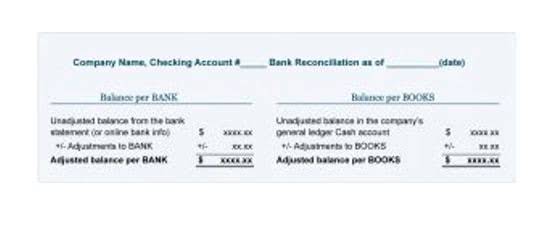9 3: Describe the Types of Responsibility Centers Business LibreTexts
As the name implies, the goal of a revenue center is to generate revenues for the business. In order to accomplish the goal of increasing revenues, the manager of a revenue center would focus on developing specific skillsets of the revenue center’s employees. The reservations group of Southwest Airlines is an example of a segment that may be structured as a revenue center. The employees should be well-trained in providing excellent customer service, handling customer complaints, and converting customer interactions into actual sales. As the financial performance of cost centers and discretionary cost centers is similar, so is the financial performance of a revenue center and a cost center.
Advantages of Responsibility Accounting
And large organisations specially divide their work into smaller sections and assign each responsibility centre with one task. This organizational strategy helps identify performance gaps, enhances transparency, fosters accountability, and facilitates more efficient allocation of resources. Companies want to be sure the investments they make are generating an acceptable return. Additonally, individual investors want to ensure they are receiving the highest financial return for the money they are investing. Managers are generally evaluated based on cost control and reduction as they have no delegation to increase sales generation.
Delineating Accountability
For example, a production supervisor could eliminate maintenance costs for a short time, but in the long run, total costs might be higher due to more frequent machine breakdowns. It designates a unit or department within an organization led by a manager who is accountable for its performance. Training and communication are also vital components of a successful implementation. Managers and employees must be adequately trained to understand the principles of responsibility accounting and how to use the reporting tools effectively. Regular workshops, training sessions, and clear documentation can help build this understanding. Open lines of communication between different levels of management ensure that any issues or discrepancies are promptly addressed, fostering a culture of transparency and continuous improvement.
Human resources departments often establish policies that affect the entire organization. As you might expect, reviewing the financial performance of a discretionary cost center is similar to that of the review of a cost center. A cost center is an organizational segment in which a manager is held responsible only for costs. In these types of responsibility centers, there is a direct link between the costs incurred and the product or services produced. This link must be recognized by managers and properly structured within the responsibility accounting framework. Responsibility centers are the backbone of accountability and performance evaluation within organizations.
Many large undertakings in the U.S.A. like General Motors etc. follow this system of management control. The main responsibility of the manager of such a responsibility centre is to increase contribution. Higher the contribution better will be the performance of the manager of a contribution centre.
Responsibility Centers: Definition and Types
Responsibility accounting addresses this by breaking down financial data into manageable units, making it easier to track performance and identify areas for improvement. This granular level of detail allows senior management to monitor the effectiveness of decentralized units without micromanaging, thereby striking a balance between oversight and autonomy. Unlike traditional financial metrics, balanced scorecards incorporate a range of performance indicators, including customer satisfaction, internal processes, and learning and growth. This holistic approach ensures that managers are not solely focused on short-term financial gains but are also considering long-term strategic objectives.
For example, an investment center might benchmark its ROI against leading competitors to gauge its efficiency in utilizing assets. This external perspective can provide valuable insights and drive competitive advantage. A responsibility center is an operational unit or entity within an organization, that is responsible for all the activities and tasks structured for that unit. These centers have their own goal, staffs, objectives, policies and procedures, and financial reports. And are used to balance responsibilities related to expenses incurred, revenue generated, and funds invested to an individual.
- By establishing these centers, every segment becomes accountable for its performance and can be evaluated separately, thereby encouraging efficiency and judicious resource allocation.
- Managers of expense centers are held responsible only for specified expense items.
- Responsibility accounting supports this structure by providing a clear framework for accountability, ensuring that each manager understands their specific financial and operational responsibilities.
- Divisional investment is equal to net fixed assets of the division + current assets of the division — current liabilities of the division.
Responsibility Centre: Type # 2. Revenue Centre:
In decentralized organizations, responsibility accounting plays a transformative role by empowering managers at various levels to make decisions that align with the company’s strategic goals. Decentralization involves delegating decision-making authority to lower levels of the organizational hierarchy, which can lead to more agile and responsive management. Responsibility accounting supports this structure by providing a clear framework for accountability, ensuring that each manager understands their specific financial and operational responsibilities. This clarity fosters a sense of ownership and motivates managers to perform at their best, responsibility center definition knowing that their contributions directly impact the organization’s success. Notice that the review of the children’s clothing department profit center report discussed differences measured in both dollars and percentages.
A profit is the surplus amount of revenue that a company generates, after excluding the total cost of operation. A profit centre is concerned with the profit earned by a company as they manage and operate different functions of sales. The appropriate goal of an expense center is the long-run minimization of expenses.
But the investment center concept can be applied even in relatively small companies in which the segment managers have control over the revenues, expenses, and assets of their segments. Evaluating the performance of responsibility centers requires a nuanced approach that goes beyond simple financial metrics. One of the most effective techniques is variance analysis, which involves comparing actual performance to budgeted or standard performance. This method helps identify discrepancies and understand the underlying causes, enabling managers to take corrective actions. For instance, if a cost center exceeds its budget, variance analysis can pinpoint whether the overspend was due to higher material costs, labor inefficiencies, or other factors.
- Revenue centres can assess the estimated expenditures for marketing with the actual price and develop ways to generate more revenues for the organisation.
- Responsibility accounting categorizes an organization into distinct segments known as responsibility centers.
- The increased application of salt partially explains the \(129.2\%\) (or \(\$155\)) overage in the cleaning supplies expense account.
- For the past 52 years, Harold Averkamp (CPA, MBA) has worked as an accounting supervisor, manager, consultant, university instructor, and innovator in teaching accounting online.
- Another method used to evaluate investment centers is called return on investment.
New Business Terms
Management by objectives is an approach in which a manager agrees on a set of goals or objectives (hence the term management by objective). The performance of the manager and his or her subordinates are evaluated based on achievement of these goals. A segment is a fairly autonomous unit or division of a company defined according to function or product line.
The main problem in designing control system on the basis of profit centre arises in fixing transfer pricing. It ensures that the business has the required working capital for functioning and seeks feasible sources of investment. Responsibility centres can be of four types – Cost centre, revenue centre, investment centre, profit centre.
Performance is typically measured by comparing actual costs to budgeted costs, and variances are analyzed to identify areas for improvement. Effective cost management in these centers can lead to significant savings and operational efficiency. As an important part of responsibility-based accounting, such a center helps break down a large organization, such as a corporation or franchise business, into easily analyzed segments. Responsibility centers may have different functions, and are usually classified as cost centers, profit centers, or investment centers. A discretionary cost center is similar to a cost center, with one distinguishing factor. A discretionary cost center is an organizational segment in which a manager is held responsible for controllable costs when there is not a well-defined relationship between the center’s costs and its services or products.
While challenges may arise, addressing them through balanced metrics, a long-term perspective, communication, and flexibility can enhance the benefits of responsibility centers. By comparing the performance of responsibility centers against industry standards or best practices, organizations can identify areas for improvement and set realistic targets. Benchmarking can be particularly useful for investment centers, where the stakes are higher, and the scope of responsibility is broader.
The 5 Best Bookkeeping Services for Small Business

Avoid debts and late fees which can stagnate business growth, and can quickly leave you feeling behind. We’ll reconcile all your statements and send you reports that allow you to analyze your business, so you can determine your next step. We will review your profit and loss to find ways of cutting unnecessary expenses. Cut your bookkeeping cost by as much as half the cost of hiring an in-house bookkeeper simply through outsourcing your bookkeeping.

The 5 Best Bookkeeping Services for Small Business
- Our trained bookkeepers collaborate closely with tax specialists to guarantee that your financial records are accurate for tax filing.
- Bench also includes visual reports, a mobile app, automated statement imports, customer support, a dedicated login for your CPA, and tax-ready financial statements.
- Their main tasks involve managing daily financial transactions and keeping precise records.
- Although the monthly cost of QuickBooks Live may seem high at first glance, it actually falls in-line with many of the other bookkeeping services on this list.
- Bookkeeping can be time-consuming and complex, diverting attention from core business activities.
Bookkeepers handle the day-to-day recording of financial transactions, while accountants provide a higher level of analysis, financial advice, and tax preparation support. To learn more about the differences between bookkeepers and accountants, read QuickBooks’ guide to bookkeeping. If you outsource your bookkeeping, you can save Accounting for Churches time and effort and better manage your company's finances so you can put your attention where it belongs- on expanding your business.
Top-Rated Small Business Bookkeeping Services Near Me Find Your Local Experts Today!
Our all-inclusive bookkeeping services include everything from data entry and bank reconciliation to accounts payable and receivable and payroll processing. We strive to maintain accurate records of all financial dealings so you can always see your company's economic well-being. Bookkeeper.com offers business owners a full range of bookkeeping services—including virtual bookkeeping and accounting, tax preparation and planning, financial planning and investment, as well as payroll. Small businesses can experience significant advantages by having a bookkeeper. A bookkeeper is vital for maintaining precise financial records, overseeing daily transactions, and ensuring that the business’s financial information is well-organized and current. This not only aids in meeting regulatory standards but also offers business owners a clear view of their finances to make informed choices.

Over 25 Years Of Experience
- Yes, QuickBooks offers QuickBooks Live Bookkeeping, which connects you with certified bookkeepers who can assist you with your books or manage them for you.
- QuickBooks Live is attached to QuickBooks Online, and easily available to users who already have this accounting software.
- Outsourcing you bookkeeping eliminates the need to make your bookkeeper an employee.
- Join thousands of business owners who have already made the change to outsourcing their bookkeeping.
- I’m very impressed with the professionalism and competency of everyone at Fourlane, without exception.
Whether you need to discuss a specific transaction, review financial reports, or seek advice on financial planning, local bookkeeping adjusting entries services provide the flexibility to communicate effectively. At Fourlane, we tailor our small business bookkeeping services around your unique business, budget, goals, and processes; and, it’s all done in the software you already use. By utilizing Fourlane’s unrivaled experience with the leading bookkeeping and ERP software, Fourlane is able to help your business stay organized, focused, and prepared for the future. We’ll dedicate a bookkeeping services team to your business, and provide insightful solutions to your most important financial system challenges. Our seasoned accountants know that accuracy and careful attention to detail are essential in financial management.
- All of our bookkeepers have worked in-house at private companies, have Advanced QuickBooks ProAdvisor certifications from Intuit and other accounting products, and undergo a lengthy in-house training process.
- One of the significant benefits of Small Business Bookkeeping Services Near Me is flexibility.
- As the name implies, QuickBooks Live Bookkeeping is a QuickBooks-based service that allows you to outsource your bookkeeping to QuickBooks experts.
- The cost for these three plans is $200 per month, $400 per month, and $600 per month respectively.
- This time-consuming process diverted attention from other critical tasks, such as inventory management and customer service.
Our trained bookkeepers collaborate closely with tax specialists to guarantee that your financial records are accurate for tax filing. We regularly review bookkeeping services near me and study new tax laws to reduce your tax burden while maximizing your allowable deductions. As you can see, there are a variety of bookkeeping services available on the market that can help you streamline your financial processes and relieve some of the burdens of managing your bookkeeping. You can use the pricing tool on the Bookkeeper360 website to test out all the pricing combinations for each plan. Booktied provides bookkeeping services for small businesses that fell behind with their books and need their QuickBooks file reconciled and organized accurately.

The 10 Best Bookkeepers in Orlando, FL with Free Quotes

Owner Kenneth Mueller is a certified public accountant with more than 30 years of experience. Sunstate Property Accounting Services serves clients in Orlando and nearby areas. The company offers bookkeeping, cloud-based accounting, general ledger cleanups, and the bookkeepers in orlando creation of templates for invoices. The firm develops a customized business plan for real estate businesses. These include brokers, developers, student housing property managers, and condo associations.

Managing and running a business is a hard task and dealing with the accounting part can be tedius. At
We support and work with most major accounting and bookkeeping software platforms, making it easy to outsource to us and keeping you in control of your financial data. Our most comprehensive package, designed for established businesses seeking high-level financial management and strategic insight. Whether you have 5 employees or 100+, payroll can be an overwhelming and time-consuming task. We offer full-service payroll processing, including employee onboarding and reporting. Located in Orlando, Florida, M.Y.O.B. Consulting is a premier small business bookkeeping agency that has been serving Central Florida since its founding in 2008.
Frequently Asked Questions
- Designed for growing businesses, this package includes comprehensive bookkeeping services to help businesses scale effectively.
- Its Quickbooks-supported virtual accounting system helps company owners track sales and expenses, tax deadlines, and internal systems.
- Additionally, it provides personal and corporate tax consultation and preparation services.
- Includes financial statements and monthly account reconciliations to ensure accuracy.
- In addition to bookkeeping, they offer tax preparation and planning services.
Let us provide solutions with the latest in mobile apps and dashboards. Explore our comprehensive CPA and bookkeeping services tailored for small businesses in Florida. Achieve financial success with UpFront CPA & Bookkeeping by your side. From bookkeeping and payroll services to financial reporting and business insights, BooXkeeping is your all-in-one solution to make managing business finances easy. Are you looking for affordable and reliable bookkeeping services in Orlando?
SERVICES
Founded by a former CFO from the San Francisco Bay Area, we bring together a team of accounting professionals with over 20 years of expertise from one of the most competitive markets in the world. To improve the quality, accuracy, and efficiency of your business's back-end bookkeeping and payroll processing, so that you can focus on the nuts and bolts of your day-to-day operations. Each month, your bookkeeper organizes your business transactions and prepares financial statements. Our team takes the time to deeply understand your business, answer your questions, help you link your accounts, and show you how Bench works. Learn how to build, read, and use financial statements for your business so you can make more informed decisions.
Take the guesswork out of your business's finances and hire Orlando's most trusted bookkeeping experts today.
BooXkeeping provides local bookkeeping services to small and medium-sized businesses across the Orlando Metro area. Designed for growing businesses, this package includes comprehensive bookkeeping services to help businesses scale effectively. By 2017, Shanna had grown EOB / B4C to over $200k in annual revenue with over 25 clients. She made her first hire, Sara Russell, who is still with her today and is an important asset to the company. Serving over 50 clients and offering job costing and CFO level services to businesses of all kinds, but with a concentration in Contractors, Subcontractors, and Designers. Bench simplifies your small business accounting by combining intuitive software that automates the busywork with real, professional human support.
Bookkeeping Services Group serves the Orlando metro and nearby areas. The firm helps self-employed professionals and business owners with bookkeeping, payroll, and tax preparation and planning. Its services include monthly bookkeeping, QuickBooks consulting and training, custom management reporting, cost accounting, and financial reporting.

BOOKKEEPING

Partnering with a professional accountant ensures that your financial operations are efficient, compliant, and aligned with your goals. If you’re searching for bookkeepers in Orlando who can turn your financial chaos into crystal-clear income statement clarity, you’ve come to the right place. Whether you’re knee-deep in receipts or just want someone else to handle the numbers (because math is hard, right?), we’ve got you covered. Discover how we can help you have better finances with a personalized demo from a Bench expert, ready to answer all your questions.
- The decisions you make throughout the year will impact your tax bill for at year-end.
- We try our best to keep you with the bookkeeping team you’re assigned when you come on board.
- Shanna Quinn, the company’s owner, has been in the industry since 2000.
- At Accounting Center of Orlando, our staff is continuously training on the technology and regulations applicable to accounting and taxes.
- Tax advisory services are available to minimize sums due to revenue collection agencies.
Our focus is on ensuring well-organized bookkeeping that gives you essential information for making critical business decisions, as well as helping you take advantage of tax-saving options. We meticulously identify and implement every tax-saving opportunity, maximizing your tax savings and minimizing your overall tax liability. Leave the complexity to us while enjoying the benefits of pristine financial records. The decisions you make throughout the year will impact your tax bill for at year-end. With expert tax coaching your books will be up to date monthly, so you can make the right decisions to lower Grocery Store Accounting your tax bill. Finding the right bookkeeping service in Orlando shouldn't be difficult.
Accounting for Dummies Part 3: The Balance Sheet BS
In this article, we'll discuss the basics of balance sheets, how they work, what to focus on as an investor, and a real-world example. For new companies, a higher debt-to-equity ratio may be common if it’s relying on a bank loan or other financing to get the business up and running. And more established companies may need debt to purchase new equipment or buy a bigger warehouse. Non-current assets are assets that can’t be converted to cash easily and won’t be converted within the next year.
or Statement of financial position
Current liabilities include things like bills to pay, short-term loans, and wages owed. Non-current liabilities are for debts that take longer to pay off, like big loans and pension funds. Knowing these helps see how well a company can handle its money now and in the future.
Balance sheet equation
Sandra Habiger is a Chartered Professional Accountant with a Bachelor’s Degree in Business Administration from the University of Washington. Sandra’s areas of focus include advising real estate agents, brokers, and investors. She supports small businesses in growing to their first six figures and beyond. unearned revenue Alongside her accounting practice, Sandra is a Money and Life Coach for women in business. Looking for an even simpler way to create balance sheets that support your business?
Need more info or help with your business accounts?
Cash, the most fundamental of current assets, also includes non-restricted bank accounts and checks. Cash equivalents are very safe assets that can be readily converted into cash; U.S. ✅ Measures a company’s ability to pay short-term obligations using current assets.✅ Helps determine if the company can cover expenses without financial strain. A well-structured Balance Sheet in Finance and Accounting helps businesses track financial strength, investment potential, and growth opportunities. The next section will explore different types of balance sheets and their applications. This equation ensures that a company’s resources (assets) are balanced by its financial obligations (liabilities) and owner contributions (equity).
- Enroll in BMC Training’s Balance Sheet Mastery Program today and gain the confidence to prepare, analyze, and interpret balance sheets accurately.
- Then we also have a common size balance sheet, which is more comprehensive and shows items in absolute and percentage terms over a longer period.
- A Balance Sheet in Finance and Accounting provides crucial insights into a company’s financial health, but errors in its preparation can mislead stakeholders and result in financial mismanagement.
- You also don’t include current assets that are harder to liquidate, like inventory.
- Balance sheets are an inherently static type of financial statement, especially compared to other reports like the cash flow statement or income statement.
Similar to the current ratio and quick ratio, the debt-to-equity ratio measures your company’s relationship to debt. Owners’ equity, also known as shareholders' equity, typically refers to anything that belongs to the owners of a business after any liabilities are accounted for. Depending on the company, different parties may be responsible for preparing the balance sheet. For small privately-held businesses, the balance sheet might be prepared by the owner or by a company bookkeeper. For mid-size private firms, they might be prepared internally and then looked over by an external accountant.
Using Outdated or Inconsistent Data
The makeup of a retailer's inventory typically consists of goods purchased from manufacturers and wholesalers. Ensuring that Balance Sheets in Finance and Accounting comply with financial standards is crucial for accuracy, transparency, and regulatory adherence. Businesses must follow recognized accounting principles to maintain financial integrity, investor confidence, and legal compliance. BILL Spend & Expense gives you real-time visibility and customizable control over your business finances, so all you have to do is review and approve. For small private businesses, a bookkeeper or even the business owner can handle this task. Using a balance sheet template streamlines the process of Law Firm Accounts Receivable Management creating a balance sheet so you can easily input and organize all the information.
- Whether you’re a business owner, employee, or investor, understanding how to read and understand the information in a balance sheet is an essential financial accounting skill to have.
- This means that the balance sheet should always balance, hence the name.
- By addressing these common balance sheet mistakes, businesses can maintain accurate financial records, optimize financial management, and ensure regulatory compliance.
- The common stock and preferred stock accounts are calculated by multiplying the par value by the number of shares issued.
- Activity ratios focus mainly on current accounts to show how well the company manages its operating cycle (which include receivables, inventory, and payables).
- Without knowing which receivables a company is likely to actually receive, a company must make estimates and reflect their best guess as part of the balance sheet.
- Looking at the accounting equation, you can see why the statement of financial condition is called the balance sheet; the equal sign means the two sides balance.
Audit Risk Model: Risk Types, Formula, Calculation, Score

Auditors must navigate these complexities by leveraging their expertise, CPA training, and audit management technology to enhance the collection and analysis of audit evidence. The audit risk model Car Dealership Accounting is a framework auditors use to assess the risk of material misstatement in a company's financial statements. The model has based on the premise that all audits involve some level of risk and that auditors must take steps to manage that risk.
Step 1: Assess Combined Risk (IR × CR)
Mastering audit risks in today’s fast-paced and complex financial environments requires a forward-thinking approach that embraces innovation such as audit management software. Auditors use cutting-edge tools and procedures to meticulously identify audit risks and maintain the accuracy of financial reporting. Through a comprehensive understanding of audit risks — including inherent, control, and detection risks — auditors are better equipped for audit engagements that ensure the retained earnings accuracy of financial statements. Delving deeper into audit risk assessment, it is important to understand how external factors, such as economic changes or new regulations, influence audit planning and risk evaluations. Auditors must stay informed about these developments to adjust their strategies as new risks emerge. For instance, the adoption of new accounting standards could necessitate updated audit techniques, leading to a reassessment of control mechanisms.
- These problems suggest that while the audit risk model provides a useful framework, auditors must apply it cautiously, supplementing it with professional judgment and a deeper analysis of the client's specific risk environment.
- According to BMI, 36% of subjects were normal weight, 36% were overweight and 28% obese.
- This is especially likely when there are several misstatements that are individually immaterial, but which are material when aggregated.
- For example, if the risk of material misstatement is high, auditors need to reduce the level of detection risk.
- Given these risk levels, the auditor needs to plan his substantive audit tests to reduce the risk of not detecting material misstatements to 9%.
- An effective audit risk assessment is essential for ensuring the integrity and reliability of financial reports.
- The integration of risk assessments and strategic audit execution is essential for ensuring the reliability and integrity of financial reporting.
Supplementary Figure 1.
- It details how these risks are assessed and their relationship to the overall Audit Risk Formula, emphasizing the auditor's responsibility in planning and executing audit procedures to mitigate these risks.
- Audit risk always exists regardless of how well auditors planned and performed their audit tasks.
- For example, suppose inherent risk for the jewelry store is assessed at 100% and control risk is assessed at 80%.
- Therefore, the auditor must assess each component and determine an appropriate level of audit procedures to reduce the risk to an acceptable level.
- For example, if the level of inherent and control risk is low, auditors can make an appropriate judgment that the level of audit risk can be still acceptably low even though the detection risk can be a bit high.
These are the most common types and refer to the likelihood that an organization’s internal controls fail to detect or prevent non-compliance. Inherent risk and control risk, deeply rooted in the entity’s operations and its surrounding environment, demand an auditor’s astute evaluation. These components require a thorough analysis at both the overarching financial statement level and the more granular assertion level.

Elevate your audits– A dedicated auditor’s dashboard
- The bank is not going to provide this type of information to the auditor, especially if they have not yet informed the company, and therefore this response will not generate any marks.
- After the risk assessment, the control risk score reaches 60% due to gaps in the execution and governance of controls.
- When RMM is low, auditors can set DR as high and still have a low overall audit risk.
- After blood clotting and centrifugation, serum was processed for analysis of biochemical markers of lipid and glucose metabolism.
- Additionally, the company's recent expansion into new markets and diverse product portfolio may increase the inherent risk.
By using the audit risk model, auditors can plan and execute their audits effectively and ensure the reliability of financial statements. In conclusion, AIP can be considered a specific biomarker of fatty liver disease with high sensitivity for the diagnosis of severe liver steatosis. Considering AIP in the evaluation of patients with liver steatosis may augment the accuracy for diagnosing metabolic impairment and MASLD. Audits are an essential component of accounting, but they carry some element audit risk model of risk. The audit risk model helps assess this level of risk, making it a useful tool to employ during the planning stages of any financial audit.


On a gene transcriptional level, the scenario is orchestrated by the cholesterol-oxysterol sensor, nuclear receptor Liver X Receptor (LXR)30. Indeed, elevated cholesterol levels activate the LXR transcriptional pathway, leading to decreased cholesterol absorption and cellular uptake. Simultaneously, this pathway stimulates fatty and bile acid biosynthesis, promoting cholesterol excretion, and fecal disposal through HDL-triggered RCT. Indeed, TG circulating levels are determined by the balance between their production and clearance. These pathways are mainly controlled by PPARα35 and SREBP-1c36, whose expression is induced by insulin, which explains the classic ability of insulin to enhance the conversion of glucose to FAs37,38. In subjects with insulin-resistance, pancreatic insulin secretion is increased, both in the fasting and postprandial phases, since peripheral tissues require higher concentrations of insulin for glucose uptake39,40.

Furthermore, the technology sector is highly competitive and complex, thus putting a lot of pressure on the companies to present strong financial results. This formula shows that the overall level of audit risk is a product of the individual risk components. Therefore, the auditor must assess each component and determine an appropriate level of audit procedures to reduce the risk to an acceptable level. This is the risk of a material misstatement in the financial statements, regardless of any controls. It is influenced by factors such as the nature of the company's business, the complexity of transactions, and financial reporting history. The auditor evaluates each component and determines appropriate audit procedures to mitigate overall risk.
- Renal, liver, inflammation thyroid function markers were as well studied following standardized biochemical procedures.
- Where the auditor’s assessment of inherent and control risk is high, the detection risk is set at a lower level to keep the audit risk at an acceptable level.
- More than 50% of the Fortune 500 leverage AuditBoard to move their businesses forward with greater clarity and agility.
- Quality Control Measures play a pivotal role in overseeing the audit’s progression, ensuring adherence to the highest standards of audit practice and compliance with regulatory requirements.
- Morning blood samples were obtained after 12 h of fasting from the antecubital veins.
- Your business can minimize risk by automating accounts with tools like three-way matching and bank reconciliation.
Vaia is a globally recognized educational technology company, offering a holistic learning platform designed for students of all ages and educational levels. We offer an extensive library of learning materials, including interactive flashcards, comprehensive textbook solutions, and detailed explanations. The cutting-edge technology and tools we provide help students create their own learning materials. StudySmarter’s content is not only expert-verified but also regularly updated to ensure accuracy and relevance.
What Is the Audit Risk Model?

Similar to inherent risk, auditors cannot influence control risk; hence, if the control risk is high, auditors may need to perform more substantive works, e.g. test on a bigger sample, to reduce the audit risk. When planning audit fieldwork, your audit team meets to brainstorm potential company- and industry-specific risks and outline specific areas of inquiry and high-risk accounts. Entities being audited sometimes feel fraud-related questions are probing and invasive, but interviews must be conducted for every audit.
